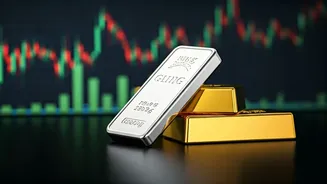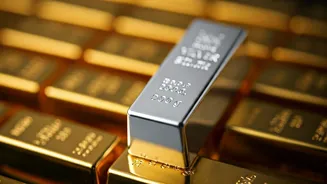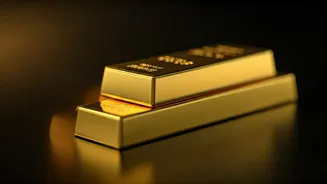Market Dynamics Explained
Silver's recent strength is largely due to a confluence of market forces. While gold is often seen as a safe-haven asset, silver's appeal is influenced
by a more diverse set of factors. These include its industrial applications, which account for a significant portion of silver demand. The metal is used extensively in electronics, solar panels, and other technological applications, with rising production and demand for these goods boosting its valuation. Moreover, as with gold, investors often turn to silver during periods of economic uncertainty, viewing it as a hedge against inflation. This dual role – both as an industrial metal and a store of value – gives silver a unique edge in the market.
Industrial Demand's Impact
The industrial applications of silver are critical to understanding its current performance. The increasing adoption of solar energy, electric vehicles, and various electronic devices has fueled substantial demand for silver. The photovoltaic industry, for example, uses silver paste in the production of solar panels, and as the world transitions to cleaner energy sources, this demand is poised to grow. Furthermore, silver's properties make it ideal for use in electrical contacts and conductors in various industries. This consistent and growing industrial demand provides a solid foundation for silver's value, setting it apart from gold, which is largely driven by investment and jewelry demand. The industrial component, therefore, gives silver an extra boost in the market.
Investment and Inflation
Beyond industrial demand, silver also benefits from its traditional role as a store of value, much like gold. During times of economic uncertainty, inflation concerns, or geopolitical tensions, investors frequently seek out precious metals as a hedge against economic volatility. Silver's relative affordability compared to gold makes it accessible to a broader range of investors, thereby increasing its investment appeal. Moreover, the market perception of silver can rapidly shift with any major economic announcements, such as changes in interest rates or inflation data. These factors can cause both short-term volatility and sustained upward trends in silver prices, making it a dynamic and attractive asset for savvy investors looking to diversify their portfolios and hedge against market risks.
Comparing Gold and Silver
While gold and silver are both precious metals, they often behave differently in the market. Gold tends to be a more traditional safe-haven asset, with its price driven more by macroeconomic factors and investor sentiment. Silver, on the other hand, has a stronger correlation with industrial activity. Gold prices tend to rise during periods of increased economic uncertainty, while silver prices might be influenced by both economic uncertainty and the industrial sector's health. The gold-to-silver ratio, which measures how many ounces of silver it takes to buy one ounce of gold, is an important metric for investors. A high ratio suggests that silver may be undervalued relative to gold, potentially presenting a buying opportunity. Understanding these differences can help investors make informed decisions about their portfolios and choose which metal suits their investment strategies best.
Future Outlook: What's Next?
Predicting the future of silver prices requires a careful consideration of various factors. The continued growth of green energy technologies, coupled with increasing demand for electronics, is likely to support silver's industrial demand. Economic conditions, inflation rates, and geopolitical events will all play key roles in influencing investor sentiment and demand. Moreover, any changes in mining output or supply chain disruptions could also impact prices. Keeping track of these elements, along with the interplay between gold and silver, is important. Silver's potential remains strong, and for investors who are prepared to observe market changes and trends, silver can continue to offer solid investment prospects. For those closely monitoring economic developments and industry shifts, silver can remain a relevant and potentially profitable investment option.





